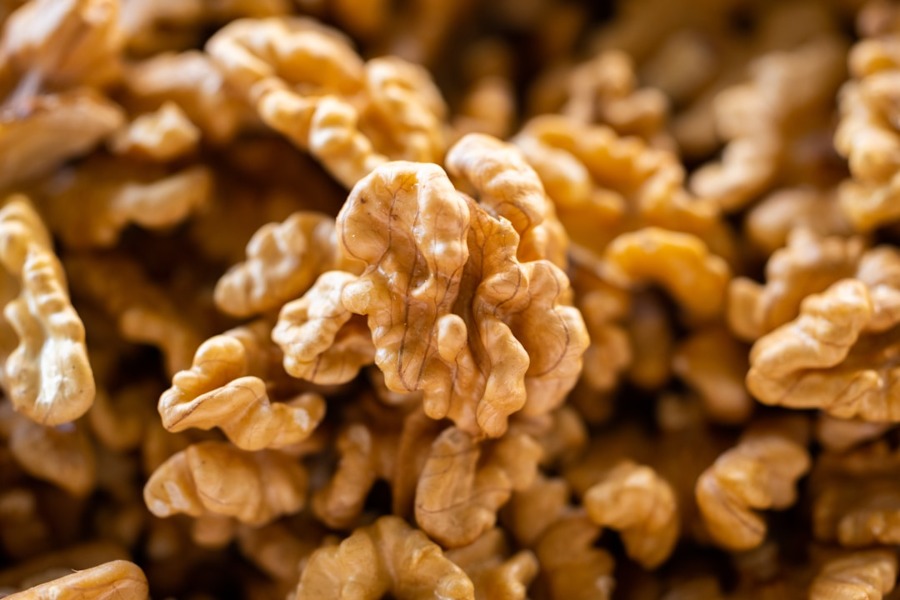Do you know the little knowledge about walnuts?
Release time:
2025-06-09
Walnut, also known as walnut, Qiang fruit. It is native to Central Asia and Iran.
Walnut
Walnut, also known as walnut, Qiang fruit. It is native to Central Asia and Iran. At present, my country's walnut planting area and output ranks first in the world. There are mainly five kinds of walnut plants in my country, which are thin-skinned walnut, iron walnut, walnut catalpa, pecan and hemp walnut. All five kinds of walnuts contain edible nuts, but only thin-skinned walnuts and iron walnuts are currently used for further processing of walnuts.
The walnuts we can see, in addition to the dried walnuts that are common in the market, have been fried, and green walnuts with a lot of water. Walnut consists of green skin, shell, septum, kernel seed coat and walnut kernel. The green walnut is the drupe during the walnut fruiting period. Walnut green skin contains many active substances: quinones, polyphenols, polysaccharides, etc., as well as many trace elements, steroids, fatty acids, vitamins and other components. The walnut green skin is non-toxic and environmentally friendly. However, if the walnut green skin juice gets on the skin, it will cause the skin to turn black, so the folks have the custom of dyeing hair with walnut green skin.
walnut green peel
Antibacterial and anti-inflammatory: Some researchers have shown that different concentrations of walnut green skin have different degrees of antibacterial effect on seven kinds of bacteria. International studies have shown that walnut green skin can inhibit Escherichia coli, Staphylococcus aureus and Bacillus subtilis, etc. For the treatment of acne, it shows that walnut green peel has obvious effect on the curative effect of inflammatory diseases.
Antioxidant and anti-aging: The polyphenols contained in walnut green peel have good antioxidant effects in the body. A large number of polyphenols, flavonoids and tannin compounds in walnut green skin have the effect of scavenging free radicals in the human body.
Preservation effect: The extract of walnut green peel has the functions of maintaining tomato firmness, reducing tomato rot rate, inhibiting respiration intensity and delaying the consumption of nutrients.
Anti-cancer and anti-tumor: Polyphenols, omega-3 fatty acids, phytosterols, carotenoids and melatonin in walnut green peel can inhibit and slow down the proliferation of cancer cells. Studies have shown that walnut green peel can promote tumor cell apoptosis through anti-tumor.
But we don't eat walnut green skin in our daily consumption, so we need to remove it. The walnuts we can buy are also ripe walnuts that have been removed and processed.
Walnut kernels, walnut oil
Walnuts are nutritious and rich in protein, fat, minerals and vitamins. The fat content accounts for 63%, and it is also rich in vitamin B, vitamin E and many trace elements. But although walnuts are good, they cannot be eaten too much. Walnut kernels are high in fat. Although they are unsaturated fatty acids, their calories are extremely high. Excessive consumption cannot be fully utilized by the body, and it will turn into cholesterol. It is precisely because of the high oil content of walnuts that the country has also vigorously developed the woody oil industry based on walnuts. Nutrient oils like walnut oil that can satisfy people's health concept are loved and welcomed by consumers.
Walnut oil mainly contains fatty acids such as palmitic acid, stearic acid, oleic acid, linoleic acid and linolenic acid. In addition to glycerides, oils and fats also have trace amounts of physiologically active concomitants, such as tocopherols, polyphenols, squalene, and the like.
Influenced by the traditional concept of "filling shape with shape", the Chinese believe that walnuts nourish the brain. In fact, many researchers have conducted scientific research and found that walnut oil or walnuts have no such effect.
Keywords:
Related Blog






